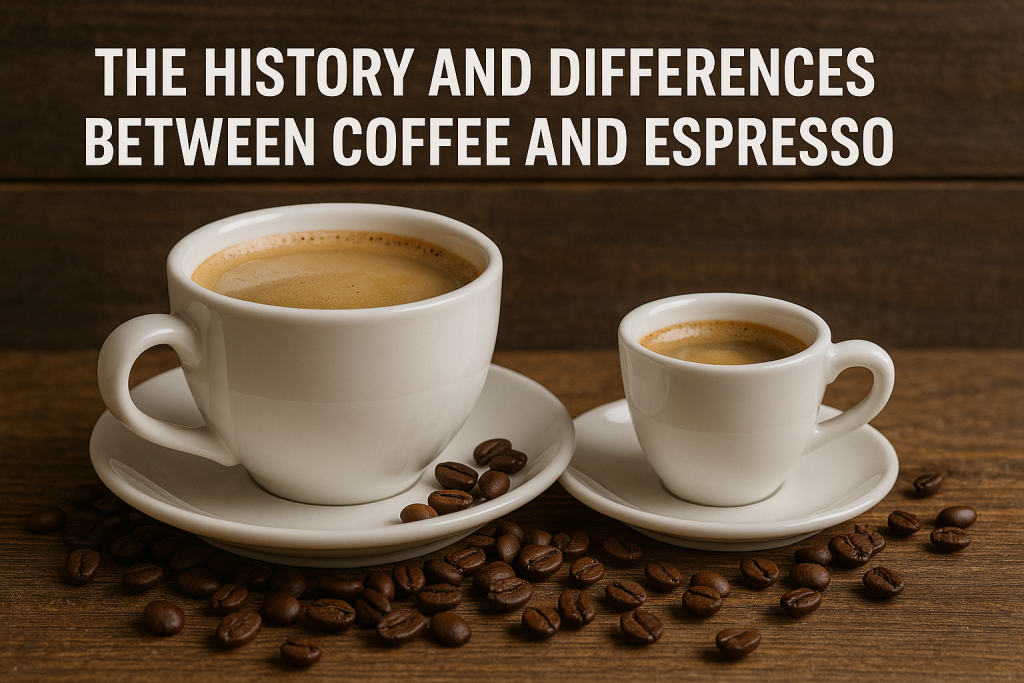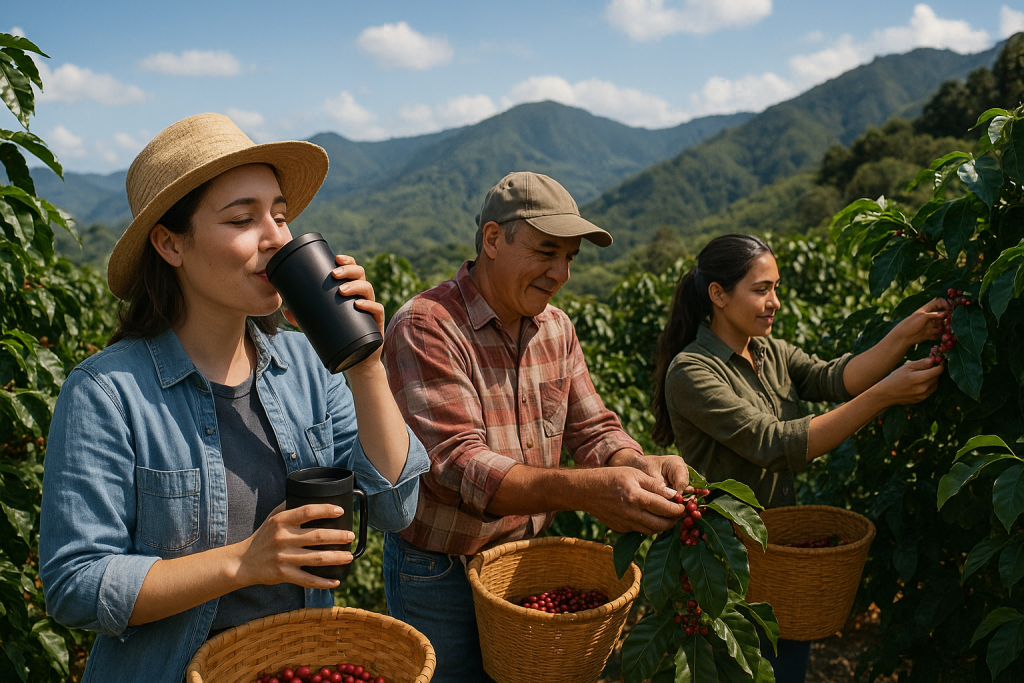
A little history
Coffee has been a cherished beverage for centuries, enjoyed by people worldwide for its rich flavors, stimulating effects, and cultural significance. Within the realm of coffee, espresso holds a special place as a distinct and concentrated form of the drink. While both beverages originate from the same coffee beans, they differ in their brewing methods, texture, flavor profiles, and cultural significance. Understanding the differences between coffee and espresso involves exploring their histories, preparation methods, roasting and grinding processes, and the factors that contribute to their unique flavors. This article will provide an in-depth guide to help consumers make informed choices about their coffee experience.
The Coffee Bean: The Foundation of Coffee and Espresso
Types of Coffee Beans
While coffee and espresso come from the same plant, not all coffee beans are created equal. There are four primary types of coffee beans grown around the world, but two are most commonly used:
- Arabica (Coffea arabica): These beans account for approximately 60-70% of global coffee production. They are known for their smooth, complex flavors with subtle acidity and floral or fruity notes. Arabica beans are typically grown at higher altitudes and are more delicate, requiring specific climate conditions.
- Robusta (Coffea canephora): These beans are bolder, more bitter, and have almost double the caffeine content of Arabica. They are often used in espresso blends to add body and crema. Robusta beans are hardier and can be grown at lower altitudes, making them more resistant to pests and diseases.
- Liberica and Excelsa: These beans are less common and typically grown in small quantities in Africa and Asia. They have a unique, somewhat woody or smoky flavor and are not commonly used for espresso.
Where Coffee Beans Are Grown
Coffee is grown in over 70 countries along the “Coffee Belt,” a region between the Tropics of Cancer and Capricorn. Each region produces beans with unique flavor profiles due to variations in soil, climate, and altitude.
- South America: Countries like Brazil and Colombia produce smooth, nutty, and chocolatey beans that are often used in both coffee and espresso blends.
- Central America: Beans from Guatemala, Costa Rica, and Honduras tend to have bright acidity with fruity and caramel notes.
- Africa: Ethiopian and Kenyan coffees are known for their floral, citrus, and berry-like flavors, often favored in specialty coffee.
- Asia: Indonesian beans (Sumatra, Java) are earthy, full-bodied, and rich, making them ideal for dark roasts and espresso.

How Coffee Beans Are Harvested
There are two main methods of harvesting coffee cherries:
- Hand-Picking: This labor-intensive method ensures only the ripest cherries are selected, leading to higher-quality coffee. It is the preferred method for specialty and Arabica coffees.
- Mechanical Stripping: Machines harvest all cherries at once, leading to a mix of ripe and unripe beans. This method is common in large-scale Robusta production but may reduce quality.
Processing Methods: How Beans Become Coffee
Once harvested, coffee cherries must be processed to extract the beans. There are three main processing methods:
- Washed (Wet) Process: The fruit is removed before drying, producing a cleaner and brighter flavor. This method is common for high-quality Arabica beans.
- Natural (Dry) Process: The beans dry inside the cherry, imparting a sweet, fruity profile. This method is traditional in Ethiopia and Brazil.
- Honey (Semi-Washed) Process: Some fruit remains on the bean during drying, creating a balance between bright and sweet flavors.
Which Process is Better?
Each method affects the final flavor of coffee. Washed coffees tend to be crisp and vibrant, while natural-processed beans develop richer, fruitier notes. Espresso blends often use washed beans for clarity or natural beans for deeper body.
Is One Healthier?
Coffee and espresso both provide health benefits, including antioxidants and metabolism-boosting properties. However, espresso has a higher concentration of antioxidants per ounce due to its extraction method, making it slightly richer in beneficial compounds.
Taste and Texture Differences
The differences in brewing methods and grind sizes result in distinct flavors and textures:
- Coffee: Traditional brewed coffee has a lighter body, more nuanced flavors, and a wider range of acidity. It is generally smoother and can have bright, fruity, nutty, or chocolatey notes, depending on the bean origin and roast level.
- Espresso: Espresso is more concentrated and intense, with a velvety texture. It has a characteristic crema—a golden layer of emulsified oils and carbon dioxide—that provides a smooth mouthfeel and slight sweetness.
- Bitterness and Acidity: Espresso tends to be bolder and richer with less acidity due to the high-pressure extraction process. The short brew time prevents excessive breakdown of bitter compounds, leading to a more balanced but intense flavor. On the other hand, brewed coffee, especially light roasts, can be more acidic, highlighting floral and fruity notes.
- Aftertaste: Espresso often leaves a lingering, slightly sweet and caramelized aftertaste due to the oils extracted during the pressurized brewing. Coffee, especially when filtered, has a cleaner finish, with aftertastes that vary from crisp and citrusy to deep and chocolatey.
- Mouthfeel: Espresso has a heavier, syrupy texture due to its concentrated nature, while coffee is thinner and more refreshing, making it easier to sip in larger quantities.
The choice between coffee and espresso ultimately depends on personal preference—whether you enjoy a slow, flavorful sip of coffee or a quick, intense shot of espresso that delivers a bold caffeine kick.
Conclusion
Understanding the differences between coffee and espresso allows consumers to choose the right brewing method for their taste preferences. Coffee offers a wide range of flavors depending on the brew method and roast, while espresso provides a concentrated and intense coffee experience. Factors such as grind size, water quality, and roasting level all play critical roles in crafting the perfect cup. Whether you prefer a leisurely drip coffee or a quick, powerful espresso shot, both beverages offer rich traditions and endless possibilities for enjoyment.
Back to Coffee and Espresso 101
